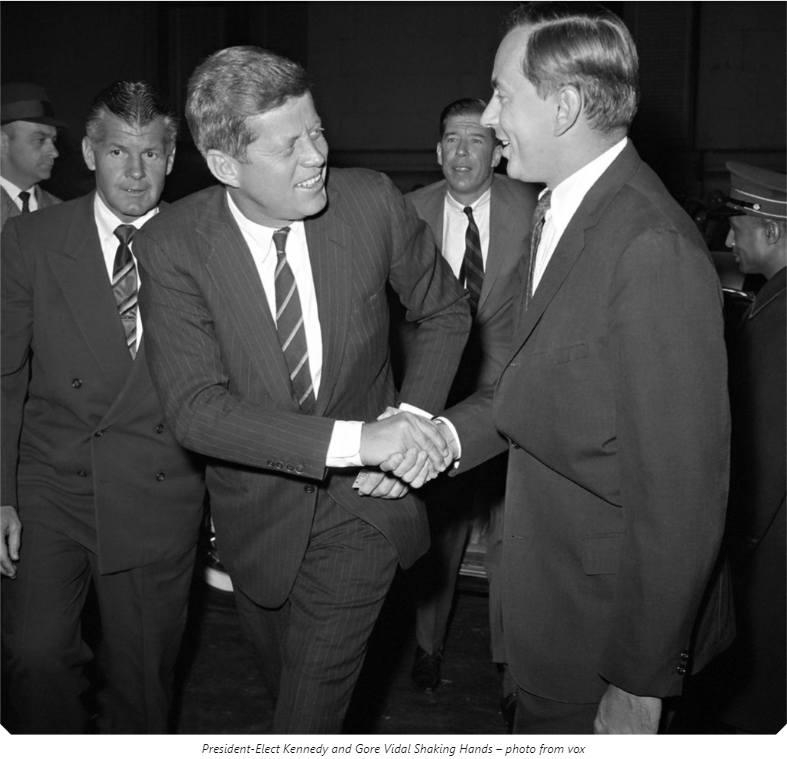No products in the cart.
First Impressions 101: How to Introduce Yourself & Others
BY PRESTON SCHLUETER
It’s a fact of life that most of us operate within a number of different social circles. Many of us will socialize with family, friends, neighbors, co-workers, and so on and often, these social circles are largely kept separate, not necessarily intentionally, of course, but simply by way of the fact that they wouldn’t have much reason to naturally come together or commingle in most circumstances.
HAVE YOU WATCHED THIS VIDEO YET?
Still, there are situations where those different social spheres will come together; parties, weddings, funerals, and so on and in those situations, given that you may be the person that knows both people from different circles, it’ll be your responsibility to introduce those people to one another hence we’ve created today’s guide on how to approach the exercise of introductions with class and tact as befits a gentleman.
Table of Contents
The Importance Of Introductions & First Impressions
By introducing people at a gathering who don’t know each other, everyone will generally feel more at ease in the social situation and people will be able to converse more comfortably. Phrased another way, the purpose of introducing people is to give them an opportunity to get to know each other. Here’s an added benefit, by performing a proper introduction, the introduced parties will reflect on you positively and see you as a socially adept individual. Never a bad thing!
Pre-Intro Considerations
Firstly, it’s important to find a proper opening and to get your timing right; after all, you don’t want to embarrass yourself by accidentally introducing the wrong people to each other or by interrupting a flowing or serious conversation with an introduction. For example, if your boss is in the middle of a business discussion at an event, butting in to introduce them to a friend will seem out of place and improper, thus leaving a bad first impression.

Etiquette Conventions of Formal Introductions
The basic protocol of formal introductions calls for introducing a lesser ranking person to a higher ranking person. These rankings are generally determined by things like age, job title, or how long you’ve personally known one of the individuals in question. The higher ranking individual’s name should always come first in an introduction.
Steps To A Formal Introduction
- State the name of the person being introduced to. In other words, state the name of the higher ranking individual.
- Say something like “I would like to introduce” or “Please meet” or a similar phrase.
- State the name of the person being introduced. In other words, this is the name of the lower ranking individual.
- Mention one or two small details to get the conversation between the two individuals started. Don’t give away too much so that they don’t have anything to talk about but just get a detail out there so things can get flowing.
Now let’s put all of that together with a few examples:
- You may, for instance, be introducing an older person to a younger person; you could say something like “Grandma, this is my friend, Will. He and I just completed a project together in Chemistry.”
- You could be introducing a senior professional to a junior professional; something like “Mr. President, this is our new data analyst, Ms. Johnson.”
- You could be introducing a host to a guest; something like “Mrs. Adams, this is my daughter, Janet, she just returned from a ski trip in Colorado.”
- If the two people you are introducing to one another are of equal status, it’s purely up to you which person’s name you want to list first, it’s that easy.
- If you are performing an introduction between one person and a group of multiple people, follow the same ranking system we outlined before but just make sure to list the names of each person in the group individually, that way, no one will feel minimized or left out. Here’s an example of that one in action; “Director Miller, I would like to introduce our Engineering team, this is Tom White, Amy Nakamura, and Kendall Thompson, all three of them participated in our conference on Wednesday.”

Casual Introductions
If you’re in a more casual situation, a full formal introduction isn’t always necessary or even practical. Still, you should generally try to follow the overall guidelines of introducing the higher ranking person to the lower ranking person. Let’s say, for example, that you’re a few rows apart in the stands at a basketball game, obviously, it’s not going to be practical to do a handshake or really have a conversation at that point in time but a smile, a friendly wave, and just exchanging names should be enough. Then, if you find yourselves in a situation where you can have a more full conversation later, take the opportunity to do so.
Body Language & Social Cues
Look at the person you’re speaking to first then turn to the other person as you complete the introduction. You should make an effort to make eye contact with both individuals that are part of the introduction. Speak clearly, of course, and don’t mumble. Mumbling is just going to reflect poorly on you as the person conducting the introduction. As we’ve already mentioned, use courteous language. May I introduce or “I’d like you to meet” are good examples of a lead-in for an introduction. “May I present” is going to be your most formal option.
In more formal situations or when there’s an obvious age difference between parties, using courtesy titles and last names is going to be more polite than just using first names. After all, once they get talking, the people you are introducing can make the decision to use first names themselves and even when you are using first names, try to include last names as well. Not only is it more polite but it also aids in memory retention for those people being introduced.

Also, teach children to use the titles of adults rather than simply their first names unless an adult specifically requests that only their first name be used. For example, something like “Mrs. Rosen, this is my niece, Kayla. Kayla, this is Mrs. Rosen”. This brings up a good point about repetition, though, only when introducing children to adults should you reverse and repeat the introduction; as in “X this is y, y this is X”, otherwise, reversing and repeating can make the introductions seem a little tedious. In order to make sure that everyone remembers everyone else’s names, just use names organically as the conversation continues.
Finally here, let’s cover what to do if you find yourself having forgotten someone’s name in the middle of an introduction; after all, it does happen. The best course of action is simply to politely excuse yourself and say “I’m sorry, would you please remind me of your name?” and if you find yourself repeatedly blanking on someone’s name, be a little bit sneaky. Take the two people and simply say, “Have the two of you met?” then you can sort of prompt the two people to say their names for one another. This is a little bit risky, however, and it won’t always work so it’s a tactic that’s best avoided. In general, honesty is the best policy.
If You Are The One Being Introduced
First, stand and face the person in question. This makes it easier to maintain eye contact and shake hands and presents you as equals in the introduction. If a person is unable to stand, of course, just politely lean to their level. Don’t forget to smile, give a firm but not crushing handshake, and let go promptly. There are a few things more awkward than somebody who hangs on too long after a handshake and finally, after the introduction has been completed, give a pleasant greeting to the person to whom you’ve been introduced, “I’m very pleased to meet you” is an easy choice.

Introducing Yourself To Others
If you know the person’s name and title, it’s best to use it. Something like “Mr. Jones, my name is Michael Wilson. It’s a pleasure to meet you” and if you’d like to introduce yourself but you don’t know the person’s name, you can just lead with yours. Something like “Hi, I’m Preston Schlueter. I thought I’d like to get to know you”. As with before, don’t forget the smile, eye contact, and firm handshake.
CONCLUSION
Knowing all of these rules, all types of introductions should be a breeze for you. You’ll look good to the people whom you’re introducing and they should hopefully be able to start up a conversation with little to no effort.
